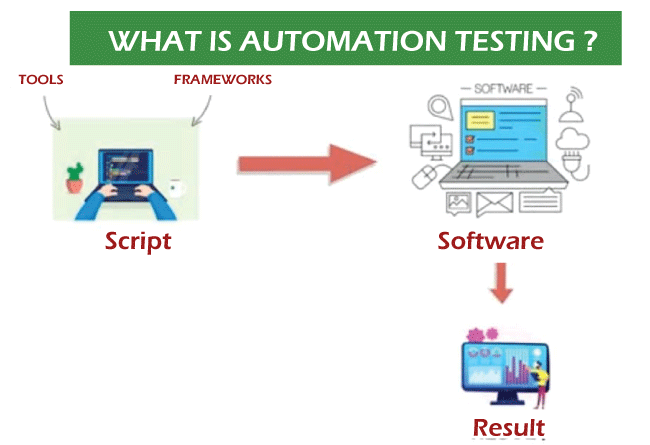Mastering Automation Testing: Tools, Methods, and Benefits
Mastering Automation Testing: Tools, Methods, and Benefits
Blog Article
From Handbook to Automated Testing: A Comprehensive Guide to Transitioning Efficiently and Efficiently
In the realm of software application testing, the change from guidebook to automated processes has ended up being a progressively important change for organizations seeking to enhance effectiveness and accuracy in their testing practices. The journey from handbook to automated screening is not without its obstacles, yet when approached purposefully and with a clear plan in mind, the advantages can be significant.
Benefits of Automated Evaluating
Automated screening supplies many advantages, improving efficiency and precision in software application growth procedures. One primary advantage is the considerable reduction in screening time. Automated tests can be run concurrently on numerous tools and running systems, substantially quickening the screening stage compared to hands-on screening. This enhanced effectiveness permits faster comments on the top quality of the software application, enabling programmers to identify and resolve problems without delay.
Moreover, automated screening ensures a greater level of precision in identifying flaws. Uniformity in testing is additionally enhanced, as automated examinations carry out the exact same steps exactly each time they are run.
Picking the Right Devices

To start with, examine your goals and requirements. Understand the scope of your job, the modern technologies entailed, and the capability of your group. This evaluation will certainly aid you identify the capacities and features you require in your testing devices.
Second of all, think about the compatibility of the tools with your existing systems and processes. Smooth assimilation with your current software application advancement lifecycle is necessary to make certain a smooth transition to automation.
Additionally, review the scalability and versatility of the devices. As your testing needs progress, the devices should be able to adapt and fit adjustments properly.
Last but not least, variable in the support and community around the devices. Durable support and an energetic user area can provide important resources and help when implementing automated testing. By thoroughly taking into consideration these facets, you can pick the right devices that line up with your demands and established the stage for a successful transition to automated testing.
Composing Efficient Examination Manuscripts

When crafting examination manuscripts, it is important to think about the particular demands of the software being evaluated and make sure that the manuscripts deal with all critical functionalities. Descriptive and clear calling conventions for examination manuscripts and examination cases can enhance readability and maintainability. In addition, incorporating error handling systems within the examination scripts can help in recognizing and addressing problems quickly.
Furthermore, arranging examination scripts into modular parts can improve reusability and scalability, lowering redundancy and improving performance in test script upkeep. Normal evaluations and updates to evaluate scripts are critical to equal advancing software demands and functionalities. By following these principles, testers can develop robust and effective test manuscripts that add dramatically to the success of automated testing processes.
Integrating Automation Into Workflows
Effective integration of automation devices into existing workflows enhances and enhances procedures efficiency within software application development cycles. When including automation into workflows, it is vital to determine repeated tasks that can be automated to save time and lower human error. By perfectly incorporating automated screening devices like Selenium or Appium into the software program growth lifecycle, teams can accomplish faster feedback on code changes, bring about quicker insect discovery and resolution. This combination permits constant screening throughout the advancement process, making certain that any kind of problems are determined at an early stage, leading to higher software program top quality. Furthermore, automation can be utilized to cause examinations immediately after each code commit, giving instant validation and maximizing testers to focus on even more complicated scenarios. Correct assimilation of automation tools requires cooperation between development, screening, and procedures groups to establish a unified operations that enhances linked here efficiency and efficiency in delivering premium software application items.
Making Sure a Smooth Change
Successfully transitioning to automated testing includes thorough planning and cautious implementation to decrease disruptions and maximize efficiency in the software advancement process - automation testing. To make sure a smooth change, it is vital to start by carrying out a thorough assessment of the current testing processes and recognizing locations where automation can bring one of the most substantial advantages. Involving with all stakeholders early on at the same time, including designers, testers, and job managers, is important for gathering support and buy-in for the automation effort
Communication is essential during this transition stage. Clear communication of the objectives, advantages, and assumptions of automated testing assists to take care of any resistance or concerns that may arise. Additionally, providing adequate training and sources for staff member to upskill in automation tools and techniques is vital for ensuring an effective change.

Conclusion
Finally, transitioning from handbook to automated testing uses many advantages, consisting of raised efficiency and reliability. By selecting the suitable tools, writing effective test scripts, and integrating automation perfectly into workflows, organizations can guarantee a smooth and successful shift. It is vital to accept automation as a useful property in software program screening procedures to enhance general quality and productivity.
In the realm of software screening, the change from handbook to automated processes has become an increasingly vital change for companies seeking to enhance efficiency and precision in their screening methods. Automated tests can be run concurrently on multiple devices and running systems, substantially speeding up the screening phase compared to hand-operated testing. Consistency in screening is likewise improved, as automated examinations perform the same actions exactly each time they are run.To ensure the hop over to here effective application of picked screening tools, the production of effective examination scripts plays a critical duty in verifying the capability and performance of helpful site automated procedures - automation testing. By complying with these principles, testers can produce effective and durable examination scripts that contribute significantly to the success of automated testing procedures
Report this page